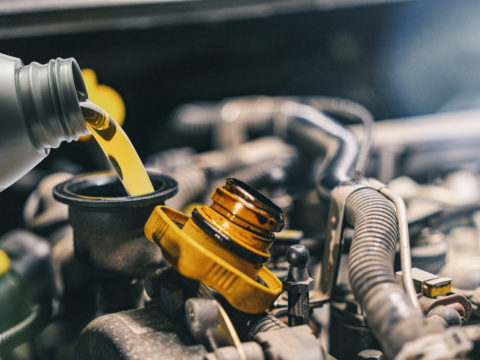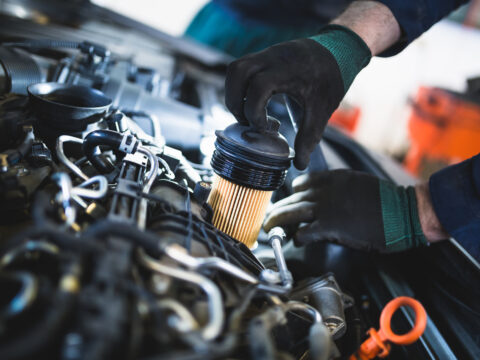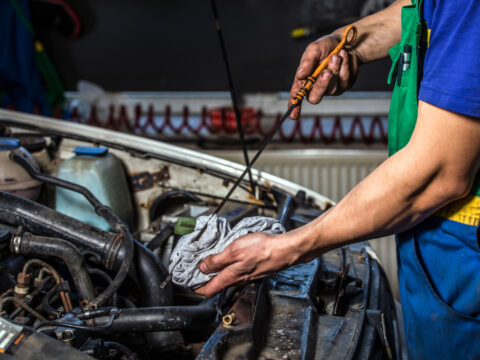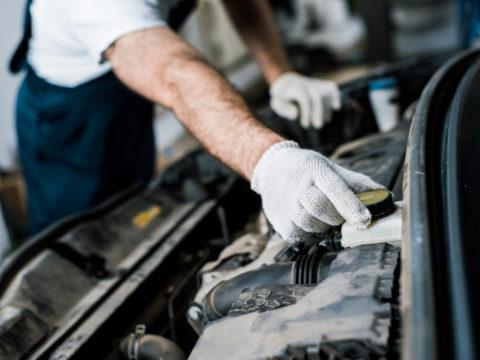In the United States alone, people drive enough to consume 337 million gallons of gasoline per day. So much driving calls for maintenance, and an oil change is one of the most important and common of these tasks.
If you’ve been struggling with too much oil in car problems, we’re here to help. Here are the causes and fixes of an excess of oil in your vehicle.
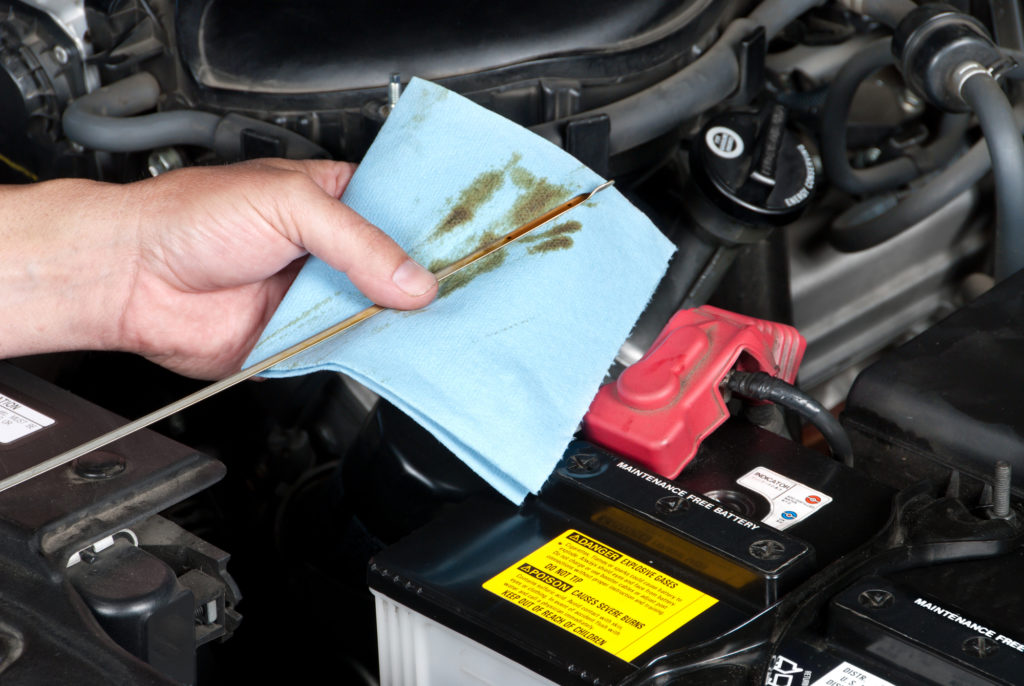
Contents
How Much Oil Is Too Much on the Dipstick?
The dipstick is the best and quickest way to measure your oil. As the name suggests, you use this built-in tool by dipping it into the oil tank and measuring it when you lift it out.
If you lift your dipstick and see that it’s about an eighth of an inch above the “full” mark, your engine is too full. Anything above this is cause for action. A millimeter or two above the fuel line is perfectly fine.
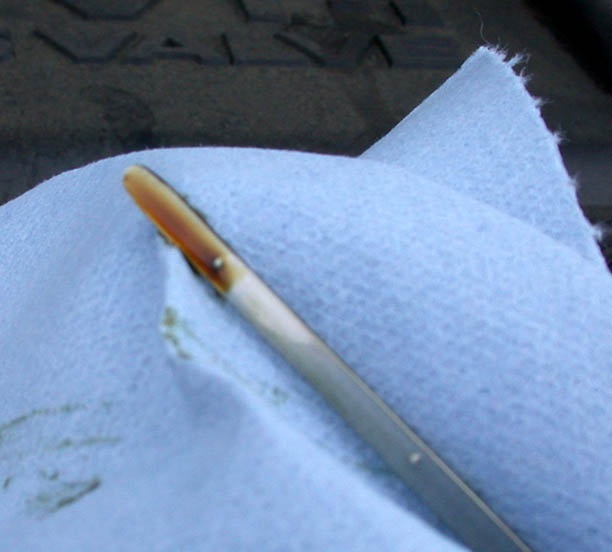
How Do You End Up With Excess Oil in Car?
Predictably, the core cause for excess oil is overfilling the oil reservoir. The most common cause of this is someone pouring too much oil into their tank during an at-home DIY oil change.
Professional mechanics are guilty of this as well. Many mechanics use a large reservoir to pump oil into cars during oil changes. These machines work fast, and it’s easy for a mechanic to accidentally overfill an engine using one.
How Do You Know If There’s Too Much Oil in Car?
Other than using a dipstick, there are several ways that you can detect an engine with too much oil. Here are five of the most common ways to tell if you need to remove excess oil from your vehicle.
1) Leaving Oil Puddles or Other Oil Leaks
When an engine has too much oil, the oil will inevitably spill out. It’s common for a car to leak oil, especially after it’s been running. After the engine has been running, the oil is warmer, causing it to expand and spill out. You will likely notice this as oil puddles in a driveway or spilling in the engine.
2) The Stench of Burning Oil From Engine
Excess oil will escape the tank and rest on other parts of your engine. As the engine heats up, the oil will burn. You can often tell if you have excess oil because you can smell the burning oil from anywhere within or nearby your car.
3) Smoke From Engine
As the excess oil burns, it turns to smoke. Your engine may begin to give off smoke. While this is typically cause for alarm, there’s a high chance that excess oil is the cause.
If you’re driving, pull over somewhere safe and check your engine. Though oil is a likely cause, there are other severe reasons your engine could be smoking, and caution is vital.
4) Black Exhaust From Tailpipe
Burning oil can also show itself as black exhaust coughing out of your tailpipe. Sometimes the oil can be different colors, with blue smoke being typical as well. If your exhaust begins coughing out dark fumes, check your oil reservoir quickly.
5) Strange Engine Noises
The final symptom is strange noises coming from your engine. Primarily, this is because your engine is struggling to accommodate the excess oil.
That said, there are many reasons why your engine could be making strange noises. Make sure to check your oil reservoir first, but know that this could signal any number of issues.
Engine Oil Overfill Problems You Should Expect
Now that we know how it happens and the signs, what are the symptoms? Here are some of the most common issues that come with having too much oil in car reservoirs.
1) Strain On Engine
The most critical issue is the strain that an excess of oil causes on an engine. Too much oil puts stress on gaskets and caps and can drastically harm your vehicle.
2) Noisy Engine
The strange engine noises are only one of the sounds you may hear. Having too much oil will make your engine less efficient. Such a thing causes a noisy engine, clattering, and even hides more severe issues that would show from such sounds.
3) Unpleasant Smells
While relatively minor, unpleasant smells are frequently active with an excess of oil. Burning oil will stink up your whole car, making your drive unpleasant for you and your passengers.
4) Oil Stains and Leaks
Leaking oil from your engine can cause a whole suite of problems, and excess oil will be the leading cause of a leak. These leaks could damage other parts of your engine or car’s internal systems, as well as stain the areas outside of the car where the oil spills.
5) Inferior Lubrication
Oil has a purpose in your car, and overfilling your oil reservoir drastically harms that purpose. With too much in the tank, the oil won’t be able to flow correctly. Improper oil flow stops the oil from lubricating your engine, severely hindering performance and causing damage.
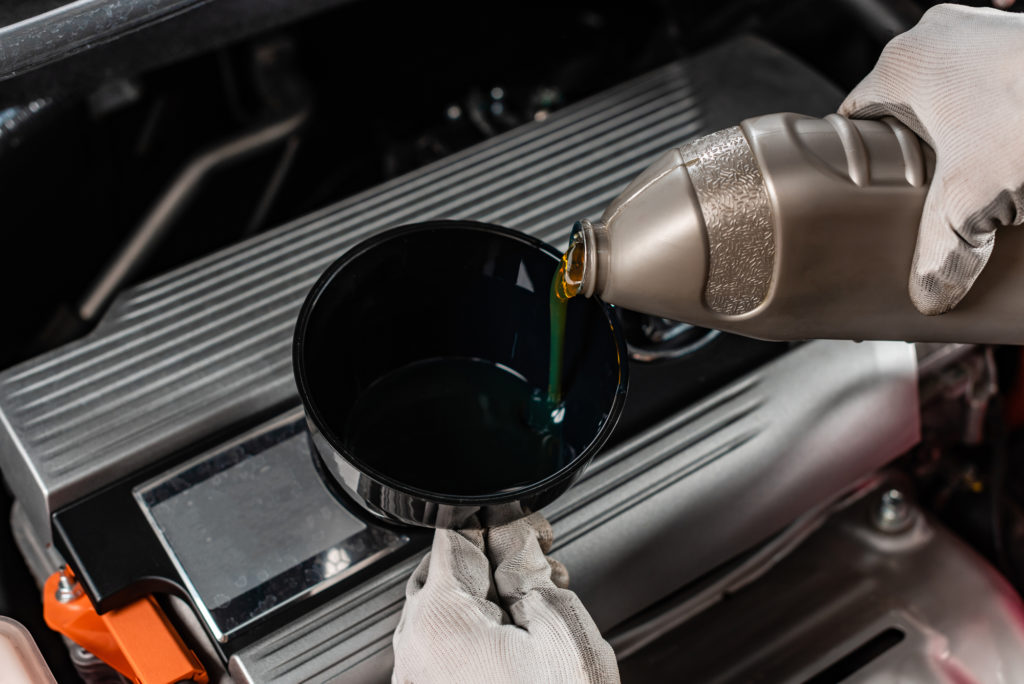
How to Reduce Oil Level in Car
Once you’re struggling with having too much oil, how do you fix it? Here are the two best methods for removing excess oil from your vehicle.
Method 1: Draining the Excess Oil
The most obvious answer is to drain out the excess oil. Doing so requires only two tools and a bit of knowledge about your vehicle.
Tools and Equipment Needed
For this, all you’ll need is the appropriate wrench – typically 3/8ths inch – and an oil pan, as well as a way to get under your car. Something soft to lie on is a good bonus!
Locate and Unfasten Oil Pan Plug
Locate the oil pan beneath your car. If you can’t find it, consult your owner’s manual or look up a how-to guide on your specific make and model.
Once you’ve found the oil pan, loosen the plug. It’s important not to completely remove the plug. Doing so will cause the oil to begin spilling out, and putting the cap back on before the oil is completely gone is both complicated and messy.
Place Plastic Oil Pan
Once the oil is flowing, put your plastic oil pan beneath it. The pan will catch and store the oil for you to dispose of or recycle at your discretion.
Let Oil Drain
With these two steps done, all that’s left is to let the oil drain. Depending on how much oil you need to drain, this could be a very quick process.
Refasten Plug and Measure Oil
With the oil level where you want, refasten the plug tightly. Afterward, measure the oil and make sure you don’t need to add or drain any more oil.
Method 2: Using an Extractor Pump
Another standard method is the use of an extractor pump. These easy-to-use tools are great for a DIY fix without needing the help of a professional mechanic.
Tools Needed
To use an extractor pump, the pump itself is the only tool you will need.
Warm Oil
Extractor pumps are much more effective when the oil is warm. Turn the engine on and let it run for a few minutes, and then allow it about 15 minutes to cool back down a bit.
Insert Tube Into Oil Dipstick Channel
The oil pump goes into the same channel as the oil dipstick. Simply remove the dipstick and carefully insert the pump tube. Once you feel the tube hit the bottom of the oil pan, you can begin pumping.
Activate Extractor Pump
With the tube in place, activate the extractor pump. Monitor the process carefully and make sure you aren’t removing more than you want.
Carefully Remove Oil Tube
When the pump finishes removing the oil, carefully remove the tube. It will be drippy, so stand by with a towel to catch the drips and prevent a mess. Afterward, measure your oil and add or drain more oil as necessary.
FAQs
There are still a few questions that may remain! Consider these frequently asked questions to quell your remaining concerns.
Can I Drive My Car With Too Much Oil in It?
Your vehicle should be okay to drive with excess oil. Don’t be afraid to drive to a mechanic with too much oil in the tank, but don’t drive your vehicle with too much oil for long or frequently.
Can Putting Too Much Oil in a Car Make It Smoke?
Yes. Putting too much oil in your car is one of the main ways to cause a smoking vehicle. If you spot smoke, immediately investigate to ensure that it isn’t a more severe issue.
Is It OK to Slightly Overfill Engine Oil?
Overfilling your engine by a couple of millimeters should not cause a severe issue. While it’s best to avoid this, you’re likely safe without action if you’ve put a small amount more oil than necessary.
If you have more questions about vehicle maintenance, feel free to contact us. You can also browse our extensive website for more information.

